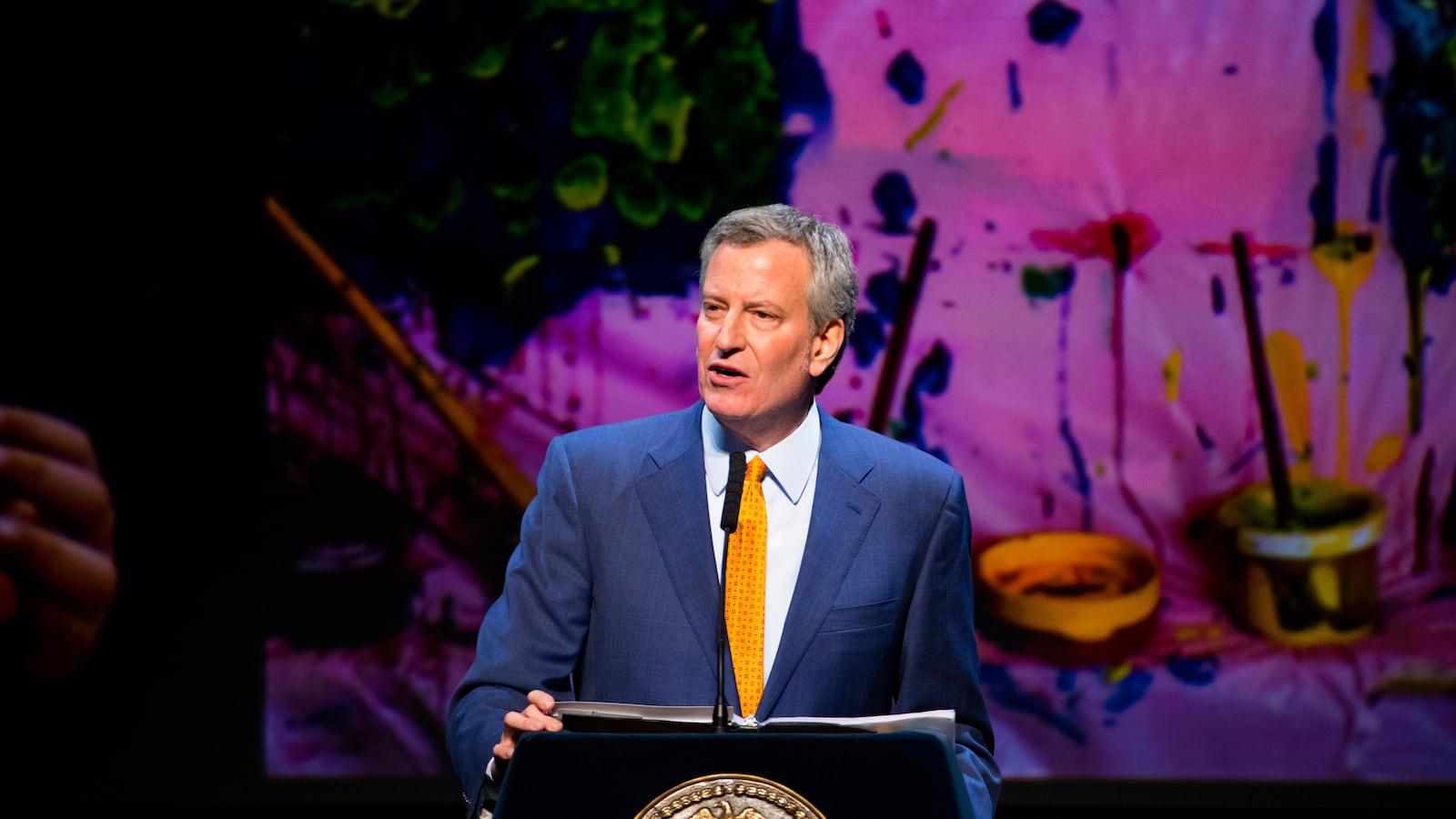New York City schools are about to get a $125 million boost, Mayor Bill de Blasio announced on Wednesday.
The new money means that all city schools will soon receive at least 90 percent of the money they are supposed to get under the city’s funding formula. The change will allow 854 schools to spend more on things like literacy specialists, tutoring, supplies, and technology, de Blasio said.
Despite the extra cash, many schools will still not reach the level the city considers fully funded. Principals have said in the past that until the city reaches its goal, the neediest schools will struggle to afford crucial services, such as additional academic programs or after-school classes.
“We are fighting against a problem that, bluntly, has been here for decades, even generations,” de Blasio said, flanked by City Council leaders who pushed for extra funds during the budget process and advocates at City Hall. “But in this generation, we’re going to fix the problem.”
De Blasio’s announcement — the first to include new Chancellor Richard Carranza — reflects the mayor’s vow to pour more resources into education. It also injects the mayor into one of the most divisive issues in New York’s Democratic gubernatorial primary: whether the state is adequately funding schools. De Blasio’s ally, Cynthia Nixon, is pushing for more money, while his adversary, Gov. Andrew Cuomo, argues that the state is helping schools enough.
The city adopted its funding formula, or “Fair Student Funding,” in 2007 as a way to send more money to high-needs schools. Instead of divvying up money based on teacher salaries, the new formula gave schools extra money based on their students’ needs: Students who are poor, struggling academically, have a disability, or just learning English bring their schools additional dollars. The formula also provides extra money to some selective schools in the city on the grounds that their students might require additional resources as well.
But the funding formula has run into a crucial problem: City officials never allocated the total amount of money that they planned to a decade ago. The city blames the state for failing to fully fund schools according to the terms of the Campaign for Fiscal Equity lawsuit that was settled in 2006. Advocates — including Nixon — have sustained attention to the settlement’s requirements for more than a decade.
At a press conference, de Blasio repeatedly blasted state officials for not fully funding schools under the Campaign for Fiscal Equity, and took a swipe at Gov. Andrew Cuomo’s suggestion that school budgeting needs more transparency as opposed to more money.
“The city puts more and more in education and the state puts less and less in,” de Blasio said. “Of course you need more money to educate better.”
Over more than a decade, the gap between how much the city and state have contributed to funding city schools has widened. In 2001, the city contributed 47 percent to the education budget while the state contributed 43 percent. Now, the difference is about 20 percentage points with the city spending more. However, that gap has remained fairly stable since de Blasio took office.
Advocates for additional school funding quickly heralded the city’s news — and criticized Cuomo.
“Unlike Governor Cuomo who has consistently blocked Campaign for Fiscal Equity funding, the mayor understands that money matters when it comes to addressing inequity in schools,” said Zakiyah Ansari, advocacy director of the Alliance for Quality Education, which formed to advance the Campaign for Fiscal Equity. Nixon is a longtime spokesperson for the group.
Carranza said he plans to continue lobbying Cuomo to increase funding for city schools. “While New York City is not waiting, we cannot do it alone,” he said. “And I look forward to being in Albany next week where I will meet with our state elected officials and I will make that case directly.”
Though schools still lag behind their funding goal, de Blasio has added more money to the system since taking office. At the beginning of his term, schools could see as little as 81 percent of what the funding formula said they should receive. That number has risen to 87 percent since 2014 and will now jump to 90 percent.
School funding in the city has remained uneven. For instance, New Design High School, which serves many needy students, got only 92 percent of what the funding formula said it should receive last year. The High School for Dual Language and Asian Studies, which enrolls a less needy population, got 112 percent of what the funding formula prescribed.
Asked about whether the city would reduce these types of inequities, de Blasio said the city did not plan to reduce school funding to promote equity.
“We have not said let’s take schools that are doing a good job and take resources away from them,” de Blasio said. “We’re in striking range — just a few years away from achieving full equity where every school is at 100 percent.”
Some schools have found other ways to supplement their funding levels. Parents in wealthier neighborhoods often raise funds to help their schools. Also, de Blasio has already committed to fully funding some of the city’s struggling schools, those in his flagship “Renewal” program. But for the rest of the city’s schools, the extra money could be crucial.
Christina Veiga contributed to this report

